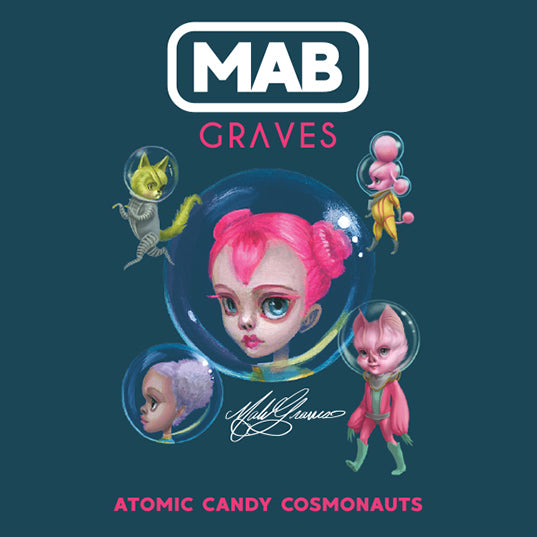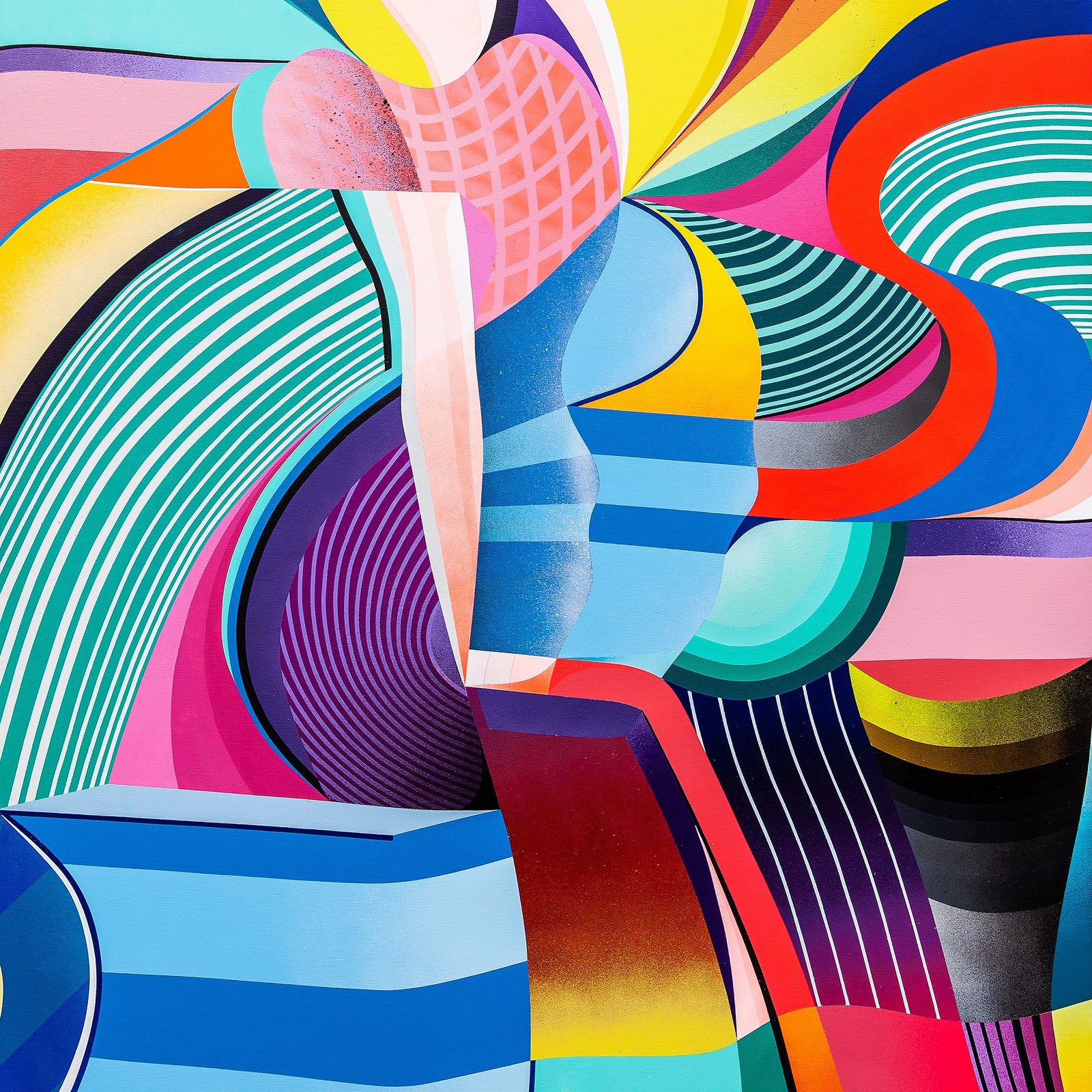Portrait: © Janette Beckman
VIEW OUR "LOVE" EDITION BY CEY ADAMS

The Brooklyn-based painter and graphic designer has an exhibit at Equinox Bond Street.
Cey Adams thinks a lot about logos. "The way people who love flowers and trees will gravitate towards them on the street, that's how I feel about logos," explains the 58-year-old, Brooklyn-based artist. The walls of his studio are festooned with colorful, collaged works centered around iconic brands like Coca-Cola, GE, and Pabst Blue Ribbon. Near the window, there are canvases in progress, and the drafting table in the center of the room is covered with supplies and bubble-wrapped pieces ready to find their way onto walls elsewhere.
Since his childhood in Queens, Adams has admired and explored the emblems—corporate and otherwise—that populate America's streets. He was part of the early graffiti movement (and founding creative director of Def Jam Recordings) and these days, spends much of his time traveling the country creating eye-catching murals.
On the heels of his six-month solo exhibit opening at Equinox Bond Street in New York City, Adams spoke with Furthermore:
What themes inspire you?
I think a lot about the Civil Rights Movement, and how we've come a long way in terms of race relations, but still have so much work to do. You see things going on today that were happening 50 years ago, like, have we learned nothing? As artists, it's our job to shine a light on some of that stuff. I'm starting to do it more and more these days.
I've found that even making [American flag artworks] is a statement. I started doing them as an homage to Americana, but then I find myself at a time in America when the flag means one thing to a certain group of people and something different to another group of people.

Branding is a theme in your art. What do you think makes a successful logo?
Something that can convey a powerful message in a very, very simple way and stand the test of time, because things constantly change, evolve, and shift. I've learned that the hardest thing is to sell somebody on something simple, because everybody thinks they can do it themselves.
I love good, clean design, like the I Love New York logo created by Milton Glaser. Strange as it sounds, we haven't redesigned the American flag yet and it's been around a long time. I love the graphics at Equinox, the logo is really beautiful. It's powerful and bold and you can see it from far away. People are busy and have short attention spans, so you have to convey a message in a split second, because that's all the time that people are going to give you.

Can you talk about your partnerships with Equinox?
I've been working with Equinox for a couple of years now. I have a giant black American flag piece at Equinox Sports Club in West LA. Equinox is one of those best in brands, so for me, working with them is always a treat. Every time I go into one of the clubs, I marvel at the details. Each one has unique characteristics of the building itself, not just cookie cutter models that look all the same. They're fully equipped to get the job done for anybody that's in the space.
Right now, we're installing a huge exhibition of 16 pieces at the Bond Street club, covering a complete spectrum of what I've been working on for the last three years. They're all sort of brand-driven, and some focus on the Civil Rights Movement and black pride. I'm hoping that the folks that are exercising there get to experience my work in a unique way.
Q:
How do you think street art has changed since the early days of graffiti?
A:
Now you can connect with people all over the city, country, and world with one post on social media. It's really a blessing and a curse, because I think that now you have more people participating for the wrong reasons. As a lifelong artist, I feel like sometimes it's turned into a bit of a circus where people just want attention. I question whether or not some of these people were artists to begin with or just misuse the art form for personal gain.
Can you talk about your street art?
I travel around the country and paint LOVE murals [each one simply reads 'LOVE']. I never sign them, and it's just a gift to the city, a universal message—you don't look at [a mural of the word LOVE] and wonder 'What are we trying to say here?' For me, public art is really a personal one-on-one relationship with anyone who sees it. I get such a kick out of making things that are going to live with other people.
The love that I get from people when I'm out there making something is just pure gratitude. Because I'm painting 'LOVE' 90 percent of the time, people will take a family photo, or bring their grandmother, or gather outside after a funeral, or even propose in front of it. As an artist, what more can you ask for?

What projects are you most excited about?
At this point in my career, I think a lot about legacy projects, which are projects that only people that have been around a long time get to do. [I creative directed and designed] a box set for the Smithsonian National Museum of African-American History and Culture. It's a nine-CD set with a book that incorporates the full history of hip-hop and rap and all the people that made it what it is today. It's going to be the greatest greatest hits collection ever assembled. I could not be more proud of it.
What's your fitness regimen?
I run a lot and I try to do 25 to 50 push-ups every day. I play a pick-up basketball game that's been going on for like 25 years and I've done that religiously since I was a teenager. I love being outside.














